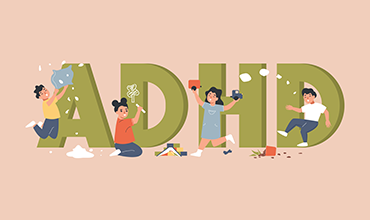Attention-Deficit/Hyperactivity Disorder (ADHD) is one of the most common neurodevelopmental disorders, affecting approximately 11% of school-aged children. While school can be stressful for a child with ADHD, a teacher can create an environment that is conducive to learning and will help him to feel successful and confident.
The classroom setting, by nature, is a difficult space for a child with ADHD.
The following are ways that teachers and parents can address typical areas of struggle for students with ADHD.
Help with Memory, Attention and Focus
Give fewer directions or steps at a time.
- Provide a written copy of tasks to follow. The chart can be posted in the corner of a student’s desk or discreetly inside a folder for an older child.
- Seat the student as close to the teacher as possible. Choose a seat away from distractions like the door, windows, class pet and pencil sharpener.
- Place the student near peers who are reliably on-task. They can serve as visual reminders of what to do.
- Establish a separate work area away from the main classroom area and facing the wall. All students, not just those with ADHD, should be allowed to self-select this quieter workstation when needed.
- Group students for work in partners rather than small groups as group work can be overstimulating.
- Divide work into smaller chunks to help with visual overstimulation.
- Reduce the amount of work or allow extra time for completion.
- Consider allowing speech-to-text software or typing. Engaging with technology often motivates students and helps them to stay on task.
Help with Movement and Hyperactivity
- Provide tools to help discharge energy while remaining seated such as hand-held fidgets, wiggle chairs, wobble cushions or chair bands.
- If the student must regularly leave his seat, place his desk near the back of the room, so he won’t distract peers and allow him to get up without penalty. The teacher should move closer to his desk when teaching to capture his attention.
- Find positive reasons for the student to move. For example, have him return books to the library, take attendance to the office or leave his seat to write an answer on the board.
- Take regular brain breaks. A student with ADHD works hard to pay attention, and as such, can become mentally fatigued more quickly than neurotypical peers.
Help with Organization and Time Management
- Keep the classroom organized with clear and posted rules. Aim to create structure and routine.
- Provide the student with an assignment notebook to keep track of homework.
- Provide designated times for clean-out / organization of backpacks, desks and folders. The whole class can benefit.
- Post a daily schedule in the classroom.
- Post an end-of-day checklist to help the student bring necessary materials home.
- Utilize a visual countdown timer. Timer apps can be projected onto the classroom smart board or wall to help the student monitor his progress and make smoother transitions.
Help with Self Esteem Preservation
- Engage discreetly. Work with the student to identify nonverbal cues that can be used for things like “check your chart, go select a fidget, get back on task,” etc. Also, create signals that the student can use to indicate that he needs a break or is struggling.
- Empower the student to self-monitor with tools such as the iPad timer function.
- Look for on-task behavior. Create an “on-task chart” and make a positive mark every time you catch the student on-task.
- Assign the student a special role so he is receiving positive attention rather than negative attention for off-task behaviors. For example, he might distribute papers, which has the added benefit of providing a brain and movement break.
- Praise effort not ability.
- Introduce books into the classroom that feature characters with ADHD and teach students about inventors, historical figures and others with ADHD who made important contributions to society.
While school can be stressful for a child with ADHD, a teacher can create an environment that is conducive to learning and will help him to feel successful and confident. The wonderful thing is that parents can also use many of these strategies at home to help daily life run more smoothly and to provide an opportunity for everyone to enjoy a more positive and loving atmosphere.
Side bar
Signs of ADHD by Type
Predominantly Inattentive/Forgetful
- easily distracted
- difficulty following directions or completing tasks
- submits incorrect or incomplete assignments
- regularly misplaces belongings
- takes longer to complete tasks
- often disorganized
- short attention span
- regularly appears not to listen when spoken to
Predominantly Hyperactive/Impulsive
- very active
- fidgets, appears restless
- leaves seat regularly, including during inappropriate times
- interrupts frequently, blurts out answers
- talks excessively
- has trouble waiting or taking turns
- show symptoms from both inattentive and hyperactive/impulsive ADHD subtypes
Alison Bogle is a writer living in Austin with her husband and three children. A former fourth grade teacher, she now enjoys writing about children and education. You can also catch her talking about articles from Austin Family magazine each Thursday morning on FOX 7 Austin.














